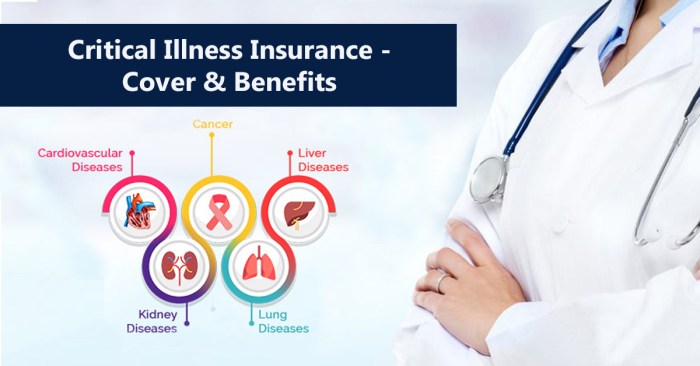Facing a critical illness can be financially devastating, even with health insurance. Critical illness insurance provides a crucial safety net, offering a lump-sum payment to help cover medical expenses, lost income, and other related costs. However, premiums can be significant. This comprehensive guide explores effective strategies to save money on critical illness insurance in 2025, enabling you to secure vital protection without breaking the bank.

Source: sbsfin.com
Understanding Critical Illness Insurance and its Costs
Before diving into saving strategies, it’s crucial to understand the factors influencing critical illness insurance premiums. These factors include your age, health status, lifestyle, the coverage amount you choose, and the specific illnesses covered. Generally, younger, healthier individuals with less extensive coverage will enjoy lower premiums. Conversely, those with pre-existing conditions or seeking broader coverage will face higher costs.
Factors Affecting Critical Illness Insurance Premiums:
- Age: Premiums increase with age, as the risk of developing a critical illness rises.
- Health Status: Pre-existing conditions or a family history of critical illnesses can significantly impact premiums.
- Lifestyle: Smoking, excessive alcohol consumption, and unhealthy habits can lead to higher premiums.
- Coverage Amount: Higher coverage amounts naturally result in higher premiums.
- Policy Type: Different policy types (e.g., single pay, level term) offer varying premium structures.
- Waiting Period: A longer waiting period before benefits are payable often translates to lower premiums.
Strategies to Save Money on Critical Illness Insurance
Now let’s explore practical strategies to reduce your critical illness insurance costs without compromising essential coverage:
1. Shop Around and Compare Quotes
Don’t settle for the first quote you receive. Multiple insurers offer different plans and pricing structures. Use online comparison tools or contact several insurers directly to obtain quotes and compare benefits and premiums. This comparison shopping is crucial for finding the best value for your money.
2. Consider a Shorter Coverage Period
If you’re younger and believe your risk of developing a critical illness is lower in the near future, consider a shorter coverage period. Shorter-term policies typically have lower premiums than lifelong plans, although this means the coverage will expire after a specific timeframe.
3. Opt for a Higher Deductible or Co-payment
Similar to health insurance, choosing a higher deductible or co-payment can lower your premiums. Carefully assess your risk tolerance and financial capacity before opting for this strategy. A higher deductible means you’ll pay more out-of-pocket in the event of a claim.
4. Maintain a Healthy Lifestyle
Insurers often reward healthy lifestyles with lower premiums. By maintaining a healthy weight, exercising regularly, avoiding smoking, and limiting alcohol consumption, you can potentially qualify for discounts or lower rates.
5. Bundle Your Insurance Policies
Many insurers offer discounts for bundling multiple insurance policies, such as life insurance, health insurance, and critical illness insurance, under one provider. This can result in significant savings on your overall insurance costs.
6. Review Your Coverage Needs Regularly
Your insurance needs can change over time, especially as your age, health status, and financial circumstances evolve. Regularly review your policy to ensure it still aligns with your needs. You may be able to reduce your coverage amount or adjust other aspects of your plan, potentially lowering your premiums.
7. Explore Group Critical Illness Insurance
If you’re employed, inquire about group critical illness insurance offered through your employer. Group plans often offer lower premiums compared to individual policies due to economies of scale.
8. Consider a Waiver of Premium Rider
A waiver of premium rider ensures your premiums are waived if you become critically ill and unable to work. While this adds to the cost of your policy, it provides peace of mind and prevents policy lapse due to financial hardship.
Frequently Asked Questions (FAQs)
- Q: What is critical illness insurance? A: Critical illness insurance provides a lump-sum payment upon diagnosis of a specified critical illness, such as cancer, heart attack, or stroke. This payment helps cover medical expenses, lost income, and other related costs.
- Q: How much critical illness insurance do I need? A: The amount of coverage depends on your individual circumstances, including your age, health, income, debts, and family responsibilities. Consult a financial advisor to determine your appropriate coverage level.
- Q: Can I get critical illness insurance with pre-existing conditions? A: It might be more challenging and potentially more expensive, but some insurers offer coverage for pre-existing conditions, though with limitations or exclusions. Full disclosure of your health history is essential.
- Q: When is the best time to buy critical illness insurance? A: It’s generally advisable to purchase critical illness insurance when you’re young and healthy, as premiums are typically lower. However, it’s never too late to obtain coverage.
- Q: What are the common critical illnesses covered? A: Common critical illnesses covered vary by insurer but typically include cancer, heart attack, stroke, kidney failure, and major organ transplants.
Conclusion
Saving money on critical illness insurance requires careful planning and research. By employing the strategies Artikeld above, you can secure affordable and comprehensive protection against the financial burden of a critical illness. Remember to compare quotes, understand the factors affecting premiums, and regularly review your coverage needs. Protecting your financial future shouldn’t come at an unreasonable cost.
References
While specific insurer websites change frequently, general information can be found on sites like:

Source: apollo-insurance.com
- Investopedia (for general financial information)
- NerdWallet (for insurance comparisons – note: always verify current information)
- (Add links to your country’s relevant insurance comparison websites here)
Call to Action
Start comparing critical illness insurance quotes today and secure the financial protection you deserve. Don’t delay – your future self will thank you!
Commonly Asked Questions
What is the average cost of critical illness insurance in 2025?
The average cost varies significantly based on factors like age, health status, coverage amount, and the insurer. It’s best to obtain personalized quotes from multiple providers.
Can I get critical illness insurance if I have a pre-existing condition?
Yes, but it may be more expensive or have limitations on coverage for related conditions. Disclosing all relevant health information is crucial for accurate pricing and coverage.
How long does it take to get approved for critical illness insurance?
Processing times vary by insurer, but generally range from a few days to several weeks, depending on the complexity of the application and required medical information.
What happens if I cancel my critical illness insurance policy?
The policy terms will dictate the cancellation process and any potential refunds or penalties. Review your policy documents carefully before making any changes.
